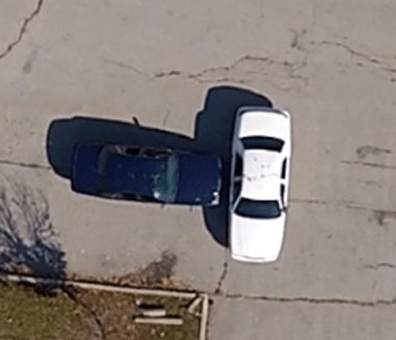Guest post by Julio Ventura, DronesGlobe —

These three identities have been developing an innovative project: a method to investigate road accidents using small and lightweight drones packed with High-Definition cameras. The current method of investigating a road accident requires many posted police agents, hours of blocked roads and slow traffic. Consequently a better and faster solution is needed. The aim is to record aerial footage from the accident within minutes, after gathering necessary footage the scene can be efficiently reconstructed afterwards. This prevents extended road blockage and reduces the time needed for measurements. An agent of Vila Real Police said, “Such an image is much more useful for scene reconstruction in court than the sketches drawn by the agent responsible for the incident”. The first drone tests were conducted a week ago but there is not yet a deadline for a definitive implementation of this new method.
The method is not unique to Portugal. Canada based company Aeryon Labs has also been developing drones aimed at this specific task. In fact, they have already released products, namely Scout and SkyRanger, already are available in this high-budget market, prices range between $65,000 and $120,000. Business reporter Vanessa Lu of the Toronto Star writes, “drivers stuck in a traffic jam when a highway closes due to a serious traffic collision in the Greater Toronto Area may be surprised to learn these devices, which police officers insist on calling UAVs, unmanned aerial vehicles, are already being used to help clear accident scenes.” The Ontario Provincial Police has already invested in three of these Aeryon Labs drones for highway safety and emergencies. Area traffic Sergeant Brad Muir for OPP’s highway safety division said: “Because scenes can be so big, we can map the whole scene . . . We try to deploy them as much as possible because we know the impact of a highway closure.” A quick response and accurate data reduce the mapping time from the average 2 hours to 15 minutes and provide backups for further analyses if needed. Although bad weather conditions prevent the deployment of these UAVs it still is a reliable time and money saver for the government.
The rapid development of the drone industry is providing new and exciting applications. The possibilities are endless. FAA Reauthorization being approved by the U.S. Senate Committee on Commerce, Science and Transportation this has opened a wide set of new possibilities to the U.S. such as the road accident investigation. The society awaits as the world learns how to deal with this new aerial technology, the future is bright and promising.
Frank Schroth is editor in chief of DroneLife, the authoritative source for news and analysis on the drone industry: it’s people, products, trends, and events.
Email Frank
TWITTER:@fschroth